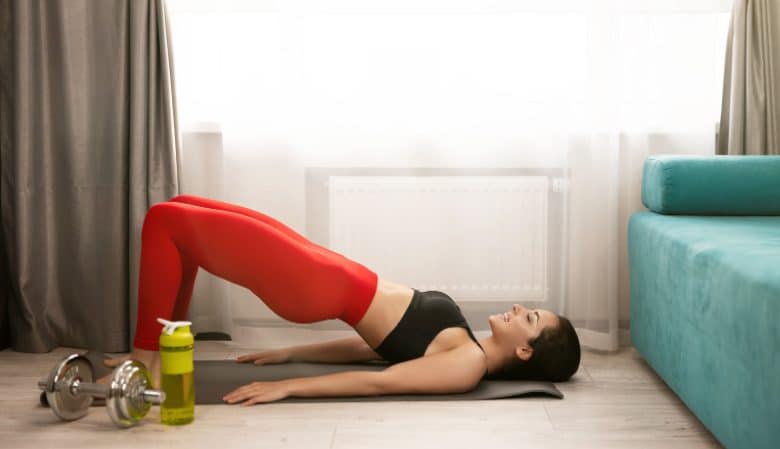Complete Guide to Hip Thrust

If you are a person who loves to play sports, there is a little known exercise to train your buttocks, achieving greater definition and strength, thanks to muscle activation.
Knowing more about this exercise will help you to include it in your training, practice it correctly and avoid the most common mistakes.
What is hip thrust?
The exercise hip thrust, which can be translated as thrust of hip in Spanish, it is about raising the hip, focusing the effort on the back of the leg, activating the muscles of the buttocks and making them stronger and more defined.
In addition, with the exercise you work the quadriceps and the hamstrings, maintaining a good posture to raise the back thanks to the muscles of the central area or core.
Do exercises like hip thrust it is a way to improve lower body strength and power.
Services
Some of the benefits you can find are the following:
-
Develop strong glutes.
It's an excellent exercise for building strong glutes, which is important for both aesthetics and performance.
-
Improves explosiveness.
Since the hip thrust involves moving your weight through a wide range of motion, it helps you improve your explosiveness when sprinting or jumping.
-
Carry over to other lifts.
The strength and power gains you develop from this type of exercise will carry over to other exercises like the squat or deadlift.
-
Prevents injuries.
Having strong glutes helps protect the knees and lower back, thus preventing injuries.
-
increases stability
It's also good for improving core stability and balance, giving you the confidence to go to the next level of workouts.
-
Improve posture.
With a strengthening of the buttocks and lower back, it will help you improve your posture, which will have many benefits not only in sports.
-
Increases sports performance.
Thanks to the increase in strength and explosiveness thanks to this type of training you will notice improvements in sprints, climbs, attacks, something important in sports performance.
What muscles work in the Hip Thrust?
The muscles that work the most in this type of exercise are the hamstrings, gluteus and the lower back.
These muscle groups provide stability and power when lifting weights or performing explosive movements, which is important in sports performance.
The glutes are the largest muscle group in the body, as they are key to providing stability and balance.
The hamstring They are located in the back and are responsible for helping the buttocks to extend the hips.
The lower back muscles They provide support and stability to the spine.
How is it done?
You will need a bench to support yourself lying down and a bar to drop the weight on the hips, although you can use elastic bands or a specific machine, and enough strength to raise the bar.
With the movement of raising the bar in this position, you will already be performing the exercise. Even if you don't have a bar, you can use your own weight, although it is best to add more as you learn the technique so that the work on the buttocks is more effective.
Types of hip thrust exercises
There are technical variants of the exercise that you can apply in training so as not to make them so repetitive.
Pullover
It is a variant where you will perform an intentional force in the pushing movement, in which you must bring the heels closer to the gluteus in the range of movement.
Rotation
It requires placing your feet further apart and making a voluntary effort to externally rotate your feet, as if you were turning them out.
feet away
It is the last variant of the technique, for which you must place your feet on the ground, further away from the bench, thus achieving greater knee extension during the pushing movement.
Drill
Here are some videos that will help you practice the technique in different ways.
1 Exercise
2 Exercise
3 Exercise
Is it good for the buttocks?
The exercise is an excellent alternative to squats, it is able to improve the development of the buttocks, which benefits the speed and general strength to complete other exercises.
With your buttocks more developed, the risk of injury decreases, thanks to the fact that you will achieve better movement and resistance. In addition, the appearance of the buttocks is more attractive by achieving a good definition.
How many times to do it a week?
To obtain better results, you should do the exercise in 3 series, of about 8 or 12 repetitions, with the highest intensity and following the technique to the letter.
Then you can complete the training with another two or three exercises for buttocks to improve results.
In general, it is recommended to do the exercise two or three times a week, without doing as many repetitions and resting enough time.
typical errors
There are several common mistakes when practicing this exercise to avoid if you are a beginner, otherwise you will not take advantage of the benefits it brings to your buttocks, such as misplacing the back on the bench, pulling with too much or too little weight, misplacing the bar, or leaving the feet too far from the buttocks.
There are no previous results.






















